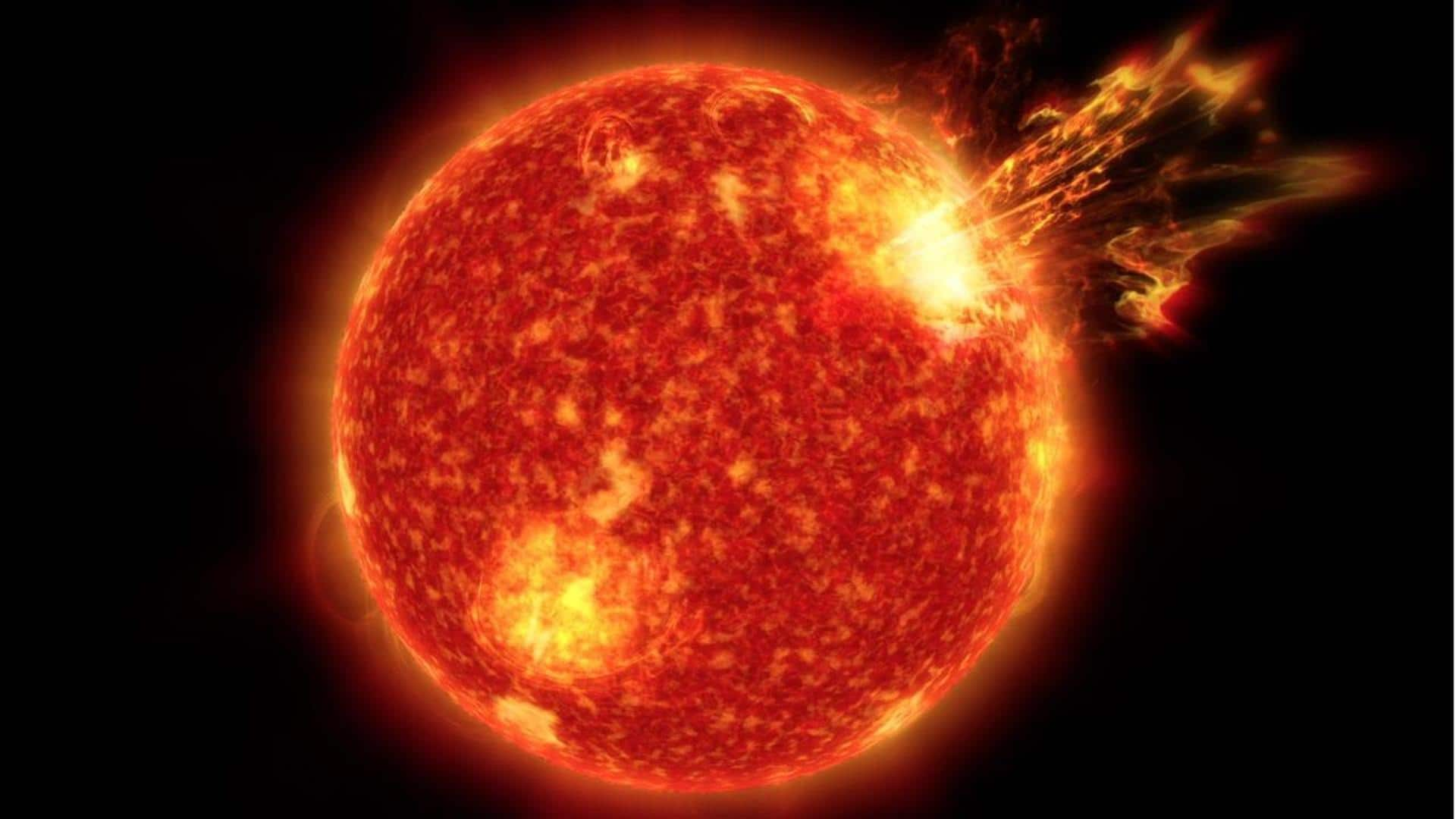
Massive sunspot has quadrupled in size raising solar flare warnings
What's the story
A massive sunspot, called AR3234, has quadrupled in size, according to observations from NASA's Solar Dynamics Observatory (SDO).
The sunspot is expected to be oriented in Earth's direction for the next couple of days with the possibility of emitting powerful solar flares today.
The same sunspot is already reported to have expelled six different solar flares so far.
Context
Why does this story matter?
The Sun goes through a solar cycle approximately every 11 years.
As the Sun gets closer to the solar maximum, the number of sunspots is said to increase. Conversely, as the Sun nears the solar minimum, the number decreases.
Recently, a solar flare erupted from the sunspot AR 3217 and caused radio blackouts on some parts of Earth.
Detail
What are solar flares?
Solar flares are giant explosions on the Sun that expel energy, light, and high-speed particles into space.
The flares have varying intensities and are broadly classified as A, B, C, M, and X. Each class is further subdivided from 1-9. There's a 10-fold increase in energy across these classes.
While X-class is the most intense, C-class and smaller solar flares are considered minor events.
Report
AR3234 is reported to be growing rapidly
"Active sunspot AR3234 is not only turning toward Earth but also growing rapidly," said spaceweather.com, in an update. "AR3234 has a 'delta-class' magnetic field that harbors energy for strong solar flares. "
National Oceanic and Atmospheric Administration (NOAA) has estimated that there is a 60% chance of M-class solar flares and a 20% chance of X-class flares to occur today.
Implications
Should you be worried?
Most of the Sun's intense radiation is absorbed by the Earth's atmosphere, so solar flares are not directly harmful to humans, according to NASA.
However, the radiation from a flare could be harmful to astronauts outside of Earth's atmosphere.
The stronger solar flares, classified class M5 or above, can affect the high-frequency radio communications used for navigation and GPS.
Detail
What causes solar flares?
Solar flares erupt from active regions on the Sun, where the magnetic field is particularly strong.
Active regions are formed by the motion of the Sun's interior, which distorts its magnetic fields.
These magnetic fields eventually build up tension and realign. The resulting energy transfer produces solar flares and other kinds of solar eruptions, including coronal mass ejections.